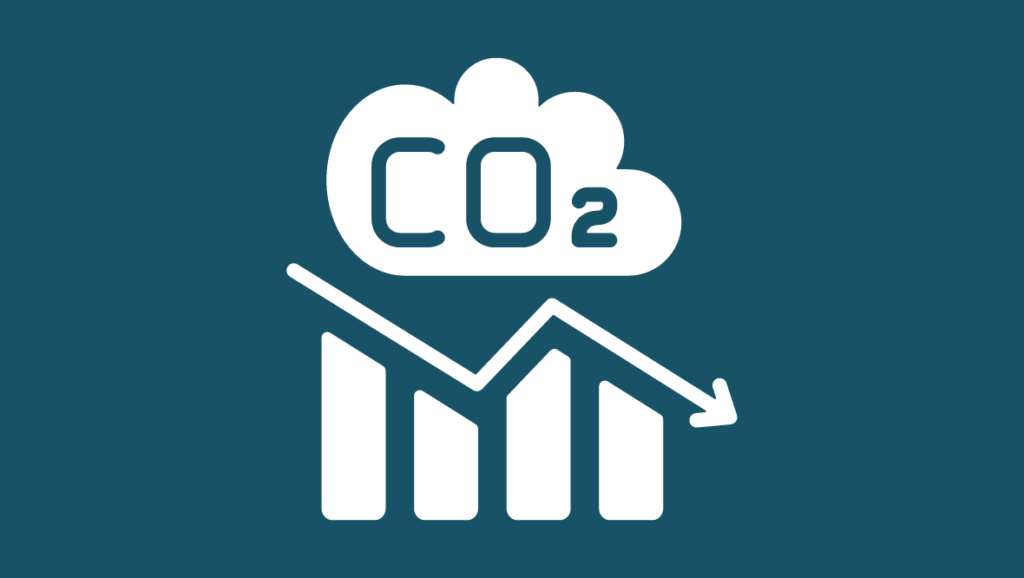GHG Emissions Reporting: A Practical Guide for Businesses

Navigate greenhouse gas emissions (GHG) reporting with our practical guide. Learn key steps, tools, and industry standards for accurate and comprehensive reporting.
The past 12 months mark a concerning milestone, with Earth’s average temperature surpassing 1.5 degrees Celsius above pre-industrial levels. As the world transitions through climate change the need for action has never been so acute. At the forefront of this effort are businesses that can contribute by minimizing their environmental impact.
Central to this effort is the understanding and management of greenhouse gas (GHG) emissions, the major contributors to climate change. GHGs, such as carbon dioxide and methane, trap heat in the atmosphere, leading to global warming and consequential environmental challenges.
This blog serves as a practical GHG emissions reporting guide for businesses providing insights about the need for GHG reporting and how to get started. As industries strive to reduce their carbon footprint, reporting mechanisms become crucial tools for measuring, monitoring, and mitigating emissions. The importance of such reporting extends beyond regulatory compliance; it is a strategic imperative for companies aiming to demonstrate environmental responsibility, foster sustainability, and meet the expectations of stakeholders.
GHG emissions reporting involves a comprehensive analysis of emissions produced directly and indirectly by a business. From energy consumption to supply chain activities, every facet contributing to the carbon footprint is scrutinized. Understanding the nuances of reporting methodologies, measurement tools, and industry standards is essential for accurate and effective reporting.
Why Should Businesses Report GHG Emissions?
Reporting GHG emissions is a strategic business decision offering a multitude of benefits for companies of all sizes. Here are some key reasons why businesses should incorporate GHG emissions reporting:
Enhanced Brand Reputation and Stakeholder Trust: Consumers, employees, and investors are just some of the key stakeholders increasingly seeking out brands committed to sustainability. By transparently reporting their emissions, businesses demonstrate their environmental awareness, commitment to responsible practices, and transparency.
Improved Risk Management and Cost Savings: Identifying and quantifying emissions allows businesses to understand their environmental footprint and potential risks associated with climate change, such as regulatory changes, resource scarcity, and extreme weather events. This proactive approach enables businesses to develop informed strategies to mitigate these risks, leading to potential cost savings and improved operational efficiency.
Increased Operational Efficiency and Resource Utilization: The process of measuring and reporting emissions often triggers a deeper analysis of energy consumption and resource usage within a company. This newfound awareness can lead to identifying opportunities for operational improvements, such as adopting energy-efficient technologies, streamlining processes, and minimizing waste. These steps not only reduce environmental impact but also contribute to cost reductions and enhanced overall efficiency.

Compliance with Regulatory Requirements: As environmental regulations and reporting requirements evolve, businesses that proactively track and report their emissions are better positioned to comply with current and future regulations. This not only avoids potential fines and legal repercussions but also demonstrates responsible corporate governance and commitment to environmental sustainability.
Identification of Opportunities for Emission Reduction: Reporting emissions provides a crucial baseline for measuring progress and identifying areas for improvement. By analyzing their emissions data, businesses can pinpoint specific activities or processes contributing significantly to their footprint. This empowers them to develop targeted strategies for emission reduction, such as investing in renewable energy, improving energy efficiency, or adopting sustainable practices throughout their supply chain.
It is important for companies, whether as portfolio companies, GPs, or LPs, to report their emissions. This could be for regulatory purposes, to meet stakeholder requests, such as through CDP, or as part of annual reporting and TCFD reporting. It should not be assumed that calculating financed emissions for the finance sector, including private equity, is a simple task.
Greenhouse gas accounting and reporting for the private equity sector, PRI (Principles For Responsible Investment)

Getting Started with GHG Emissions Reporting
Having established your emission inventory, the next step is to share your progress with stakeholders. This includes shareholders, employees, industry peers, environmental organizations, and the general public, all of whom may be interested in your company’s GHG Emissions reduction commitment. Consider highlighting your achievements on your website, annual report, sustainability report, or a dedicated emissions report to enhance transparency and demonstrate your dedication to environmental responsibility.
A standard resource for emission reporting is the GHG Protocol. According to their reporting frameworks reporting requirements should include the following elements:
- Emissions data: Quantify your company’s emissions in both metric tons and tons of CO2 equivalent.
- Scope breakdown: Report total emissions for both Scope 1 (direct emissions) and Scope 2 (indirect emissions from purchased electricity, heat, or steam) and Scope 3 (all other indirect emissions). Additionally, provide a breakdown of individual emissions sources within each scope and their combined total.
- Emission trends: Disclose your chosen base year and track your company’s emissions performance over time, comparing it to both the base year and any established reduction targets.
- Calculation methods: Explain the methodologies used to calculate your emissions, including the specific emission factors and their sources. Alternatively, you can provide a reference or link to the calculation tools employed.
- Contextual information: If your company has experienced significant changes that could impact emissions (e.g., acquisitions, divestitures, outsourcing, changes in reporting boundaries), provide appropriate context to explain these variations and any resulting base year recalculations.


